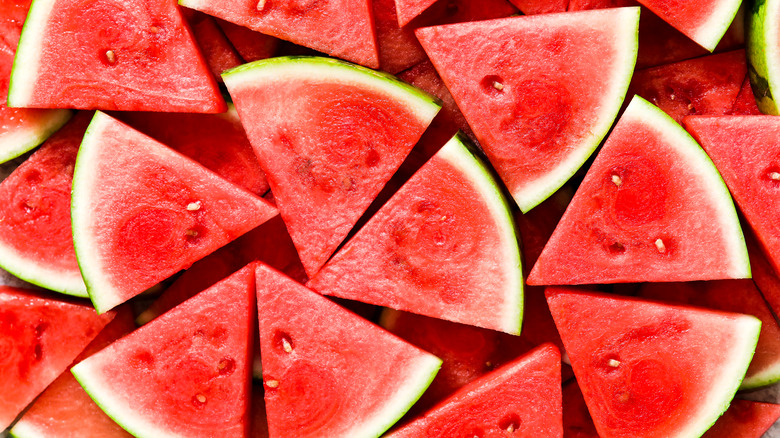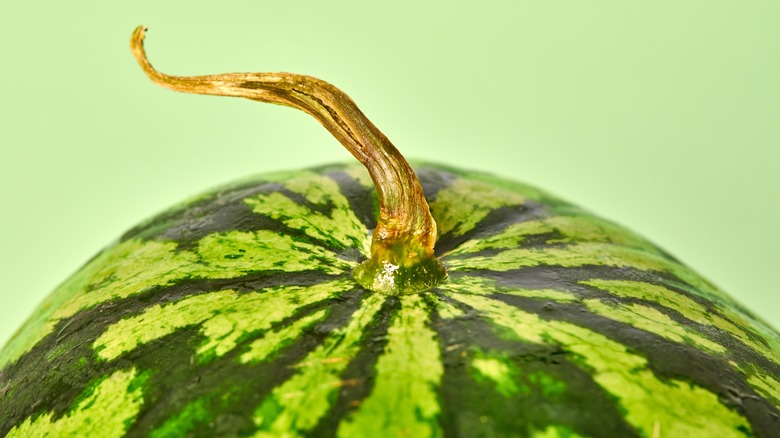Why You Should Pay Attention To The Tail Of Your Watermelon
Few things bring disappointment to the barbeque like biting into a flavorless, mushy wedge of watermelon. You've seen folks conducting all sorts of ripeness-testing rituals at the grocery store and probably received plenty of old wives' tale advice from self-proclaimed expert melon pickers. Other than thumping summer's favorite fruit like the bass player in a produce department band, there are many methods to picking a ripened watermelon.
When it comes to picking the right watermelon, opinions are more plentiful than the seeds in the red fruit; Healthline notes that some methods are easier to master than others. The success rate of the classic tapping technique is up for debate as it hinges upon your ear's ability to identify the deep thump that reverberates through a ripe watermelon. The lifting method is slightly more scientific; because watermelons are 91% water, it makes sense that a fully ripe melon would be heavier when lifted.
Easier techniques involve giving your melon's exterior a once-over, looking for blemishes, shape, firmness, and a field spot. A wonky watermelon can indicate that it wasn't well-watered or properly pollinated, and blemishes can be a sign of fungal or pest infestations. A soft rind tells you that your watermelon is overripe and will probably taste mealy and unsatisfying. The only thing you want on the rind is a large yellow mark, or field spot, which means the fruit was allowed to grow happily in the sun and develop all the sugar-sweet goodness you want in a watermelon.
Watermelon stems can reveal ripeness
In addition to a uniform visual appearance, fruity aroma, and hefty weight, Master Class suggests going right to the root, or stem, of the ripeness issue. A healthy vine will produce a deliciously sweet melon so long as it has been allowed its day in the sun.
Unlike other melons and fruits, watermelon does not continue on its ripening journey after being harvested. That's why picking a watermelon that was allowed to fully ripen on the vine is important. The watermelon's tail is the portion connected to the vine during the growing process. When a watermelon is harvested too early, the tail will remain green, indicating that the inner fruit has not reached its full flavor potential. When the tail is brown and dried out, the opposite is true of the fruit inside, and you can feel confident that you are about to enjoy a juicy, sweet watermelon just as soon as you can chop it up.
If other methods seem unapproachable, checking the tail of the watermelon may be one of the easiest methods to identify this delicious fruit at its peak. The tail-end technique can ensure summer success with a perfectly ripe watermelon that can be enjoyed as a summer salad, cooling beverage, or just as a classic wedge of sweet seasonal goodness.

